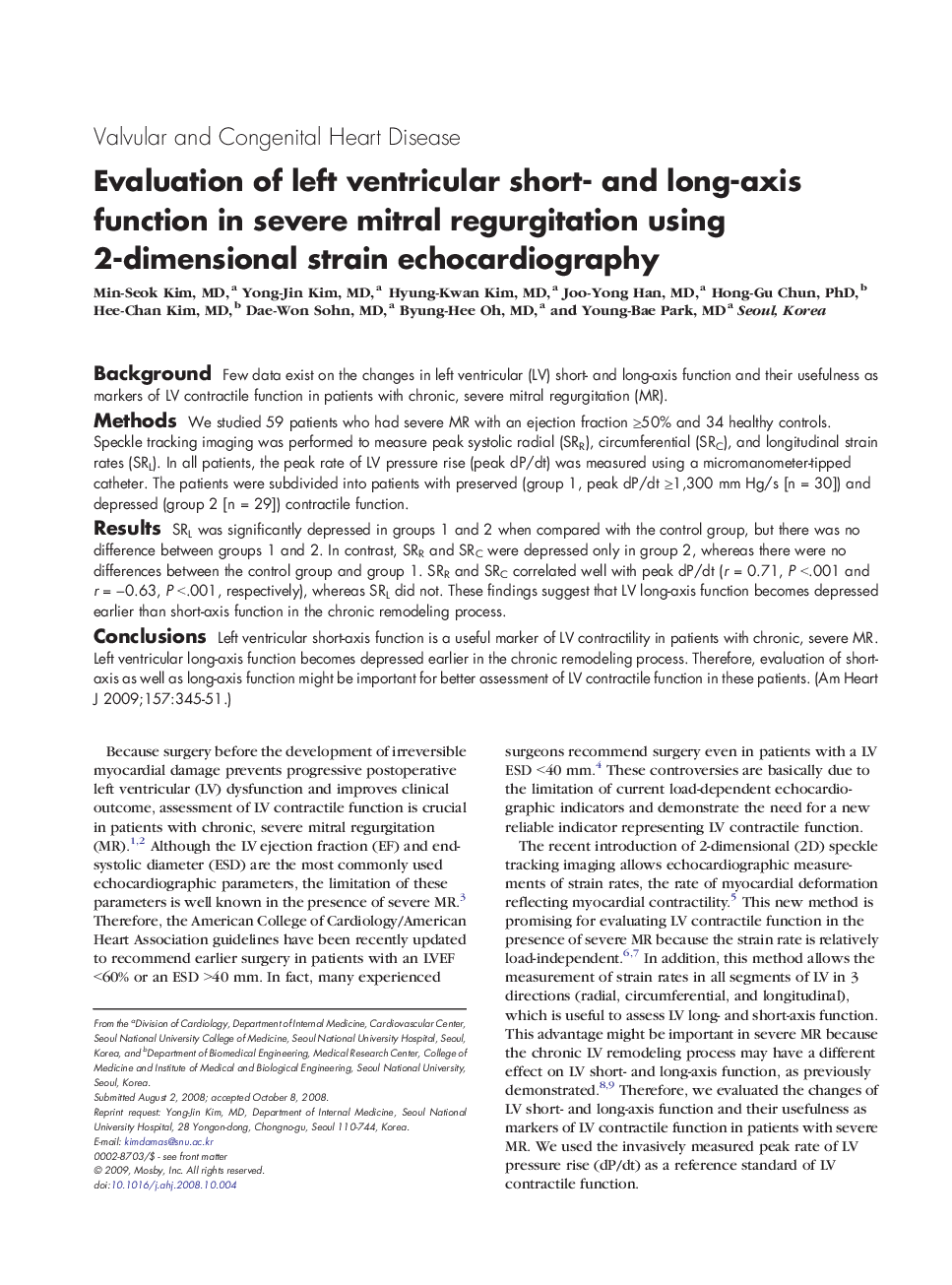| کد مقاله | کد نشریه | سال انتشار | مقاله انگلیسی | نسخه تمام متن |
|---|---|---|---|---|
| 2848992 | 1167669 | 2009 | 7 صفحه PDF | دانلود رایگان |

BackgroundFew data exist on the changes in left ventricular (LV) short- and long-axis function and their usefulness as markers of LV contractile function in patients with chronic, severe mitral regurgitation (MR).MethodsWe studied 59 patients who had severe MR with an ejection fraction ≥50% and 34 healthy controls. Speckle tracking imaging was performed to measure peak systolic radial (SRR), circumferential (SRC), and longitudinal strain rates (SRL). In all patients, the peak rate of LV pressure rise (peak dP/dt) was measured using a micromanometer-tipped catheter. The patients were subdivided into patients with preserved (group 1, peak dP/dt ≥1,300 mm Hg/s [n = 30]) and depressed (group 2 [n = 29]) contractile function.ResultsSRL was significantly depressed in groups 1 and 2 when compared with the control group, but there was no difference between groups 1 and 2. In contrast, SRR and SRC were depressed only in group 2, whereas there were no differences between the control group and group 1. SRR and SRC correlated well with peak dP/dt (r = 0.71, P <.001 and r = −0.63, P <.001, respectively), whereas SRL did not. These findings suggest that LV long-axis function becomes depressed earlier than short-axis function in the chronic remodeling process.ConclusionsLeft ventricular short-axis function is a useful marker of LV contractility in patients with chronic, severe MR. Left ventricular long-axis function becomes depressed earlier in the chronic remodeling process. Therefore, evaluation of short-axis as well as long-axis function might be important for better assessment of LV contractile function in these patients.
Journal: American Heart Journal - Volume 157, Issue 2, February 2009, Pages 345–351